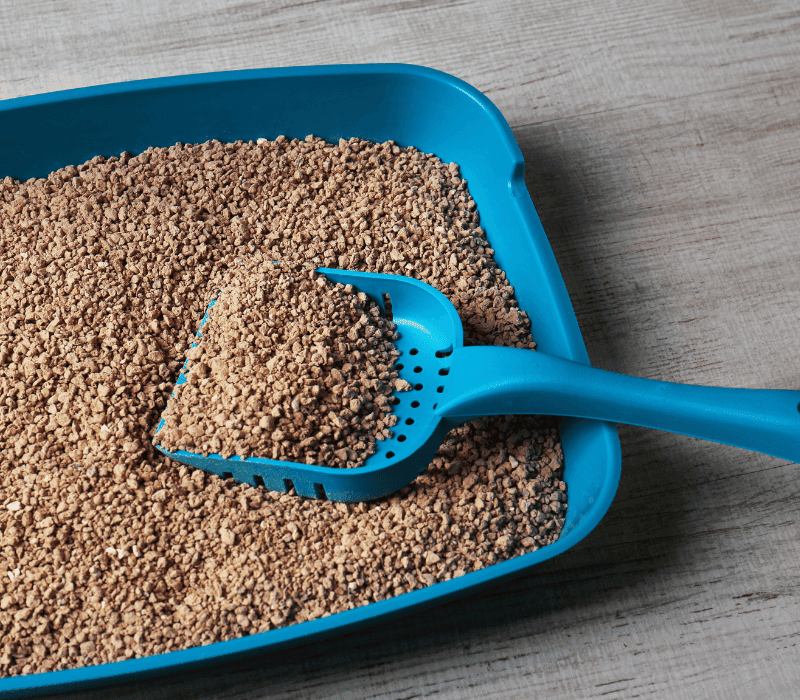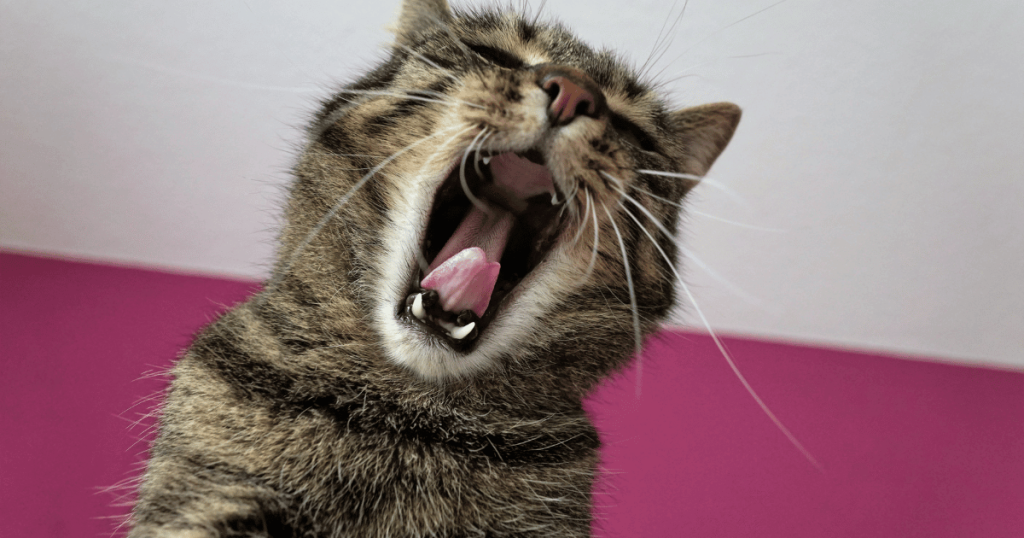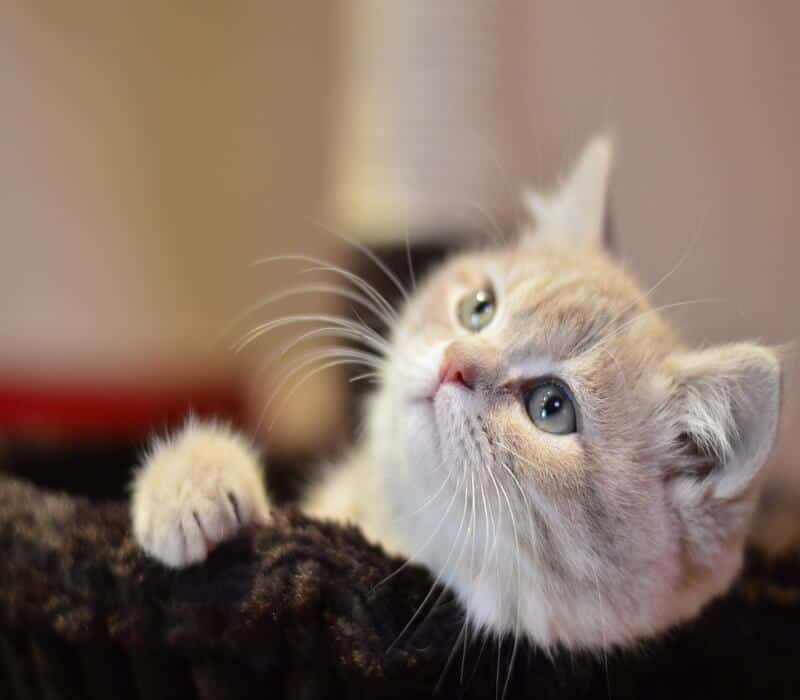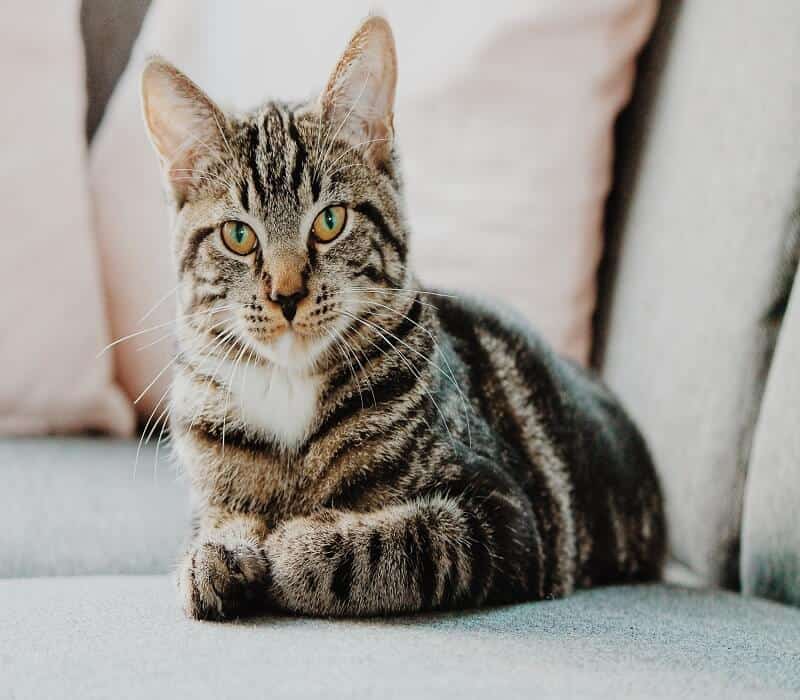
Is your cat litter not clumping as it should when you scoop the litter box? This common issue can turn a simple task into a messy challenge.
But why does this happen? The key to solving this problem lies in understanding the reasons behind it.
In this article, we’ll explore why cat litter might not clump and provide practical solutions to ensure your litter forms those perfect, easy-to-scoop clumps once again.
Common Reasons Why Clumping Litter Fails to Clump
1. Cat Spraying
Spraying is a behavior in cats where they urinate on vertical surfaces, typically to mark territory.
Unlike typical urination, where a cat squats and produces a steady stream of urine, spraying involves the cat standing upright with their tail erect.
The urine is released in a fine, scattered spray, which can result in a wider, thinner distribution of urine in the litter box. This can prevent the litter from becoming sufficiently saturated to form a clump.
Both male and female cats can exhibit spraying behavior, and it can occur even in neutered or spayed cats.
2. Excessive Urine
Excessive urine can lead to oversaturation of the litter, which can prevent it from drying and forming solid clumps. This could be due to various factors.
For instance, certain health issues, such as diabetes or kidney disease, can cause your cat to urinate more frequently or in larger volumes.
Additionally, a diet high in moisture content can result in increased urine production.
Lastly, if the litter box is too full, a cat may end up urinating on top of an existing clump of urine, preventing the fresh urine from being properly absorbed and clumped.
3. Humidity
Humidity refers to the amount of water vapor present in the air. In a humid environment, the litter can absorb moisture from the air.
This can cause the litter to become damp, which can prevent it from forming hard clumps when it comes into contact with urine.
The effect of humidity on clumping litter can be particularly noticeable in regions or seasons with high humidity levels.
4. Timing of Litter Scooping
The timing of when you scoop the litter can impact its ability to form clumps. Clumping litter works by absorbing moisture and then drying to form a solid clump.
If you attempt to scoop the litter too soon after your cat has urinated, the litter may not have had sufficient time to dry and form a solid clump. This can result in the clump breaking apart during scooping.
5. Age and Storage of Litter
The age and storage conditions of your cat litter can also affect its clumping ability.
Over time, clumping cat litter can lose its effectiveness, particularly if it’s not stored properly.
For instance, if the litter is exposed to moisture during storage, it can become damp and lose its ability to form clumps.
Similarly, if the litter is very old, it may not clump as effectively as fresh litter.
6. Litter Depth
The depth of the litter in the box can affect its ability to form clumps. If the litter is too shallow, the urine might reach the bottom of the litter box before it can be absorbed and form a clump.
This can result in a thin layer of urine-soaked litter at the bottom of the box, which can be difficult to scoop and clean.
7. Presence of Additives
Some cat litters contain fragrances, deodorizers, or other additives. While these can make the litter more pleasant-smelling for humans, they can interfere with the clumping process.
The additives can affect the absorption properties of the litter, preventing it from forming solid clumps when it comes into contact with urine.
8. Health Issues
One of the reasons your cat’s urine might not be clumped in the litter could be related to a health issue.
Some cat owners have noticed that the same litter will clump for one cat but not the other.
Although a clear connection hasn’t been established, it’s worth considering if your cat has a health issue that might be affecting the clumping ability of the litter.
For instance, conditions like diabetes can lead to increased urine production, which might affect the clumping process.
Practical Solutions to Improve Clumping
1. Choose the Right Litter
Not all litters are created equal when it comes to clumping. Some litters, like those made from bentonite clay, are known for their excellent clumping properties.
There are also litters designed specifically for humid environments, such as those made from silica gel crystals.
These cat litter have excellent moisture-absorbing properties and are less likely to break down in high humidity conditions.
2. Use a Dehumidifier
If you live in a humid environment, using a dehumidifier near the litter box can help reduce the moisture in the air and improve the clumping of the litter.
A renewable dehumidifier can be a good investment, as it can make any litter perform better in humid conditions.
3. Regularly Refresh Litter
Regularly refreshing the litter can help maintain its clumping ability.
Over time, the clumping agents in the litter can become less effective, especially if the litter is frequently saturated with urine.
By regularly removing clumps and adding fresh litter, you can help ensure that there’s always enough effective clumping litter in the box to absorb new urine. This can also help prevent the buildup of bacteria and unpleasant odors.
4. Manage Spraying
If your cat is spraying, consider providing more litter boxes (one per cat, plus one extra) to reduce territorial marking.
Also, try to identify and address any potential stressors in your cat’s environment. This could include changes in the household, conflicts with other pets, or even the type of litter box or litter you’re using.
5. Adjust Scooping Timing
Try to wait at least 15 minutes before scooping urine from the litter box to give it time to dry and form a more solid clump.
This can be especially beneficial in a humid environment where moisture buildup can quickly lead to odors and hygiene issues.
6. Address Health Issues
If you suspect a health issue might be causing the litter not to clump, it’s important to take your cat to the vet for a check-up.
Certain health issues, such as urinary tract infections or kidney disease, can cause changes in a cat’s urine that may affect the clumping of the litter.
Conclusion
We hope this article has shed some light on why your cat litter might not be clumping as expected. Remember, understanding the problem is the first step toward finding a solution.
We’d love to hear about your experiences and any tips you might have picked up along the way.
Feel free to drop a comment below with your thoughts, questions, or stories related to cat litter clumping.
Your insights could be just what another reader needs to solve their clumping conundrum!
Frequently Asked Questions
What Are the Best Ways to Improve the Clumping Ability of Cat Litter?
To enhance the clumping ability of cat litter, you can consider changing the brand of your litter to one that is more absorbent. Additionally, you could try changing the litter more frequently to prevent saturation.
Can I Use Clumping Litter for Kittens?
It’s generally recommended to start using clumping litter for cats from the age of 3 months. Before this age, kittens might try to eat the litter, which could cause health issues. From 3 months onwards, if some litter is accidentally ingested, the kitten will have a better chance of digesting it without complications.
We're an affiliate
We hope you love the products we recommend! Just so you know, gameraround.com is a participant in the Amazon Services LLC Associates Program, an affiliate advertising program designed to provide a means for sites to earn advertising fees by linking to Amazon.com.



